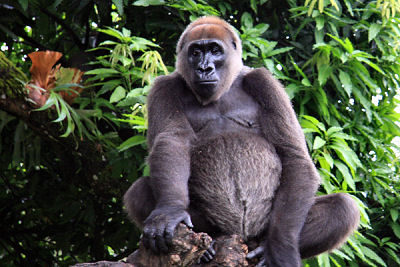Facts About Cross River gorilla
The Cross River gorilla, a subspecies of the western gorilla, was first described over a century ago in 1904. However, it wasn't until 2000 that scientists recognized it as a distinct subspecies. These gorillas are the most westerly and northerly of all gorilla species, inhabiting the forested hills and mountains along the Cameroon-Nigeria border. With fewer than 250 mature individuals remaining, they are the rarest great apes in the world.
Distinguishing the Cross River gorilla from its western lowland cousins are its unique physical traits. They possess smaller palates, cranial vaults, and skulls. Although their body size is similar, their hands and feet are noticeably shorter. These differences likely originated during the African Pleistocene period, leading to their classification as a distinct subspecies.
These gorillas inhabit dense forests but face constant threats from deforestation, habitat fragmentation, and human activities such as hunting, logging, and farming. Their diet varies with the seasons and includes fruit, herbaceous plants, lianas, and tree bark. Their nesting behaviors, group dynamics, and aggression patterns are influenced by both their environment and human interference.
Geographically, Cross River gorillas are confined to the Cameroon-Nigeria border, specifically in 11 localities spanning a 12,000 km² area. Human activities have fragmented their habitats, posing a significant threat to their genetic diversity and long-term survival.
Conservation efforts are critical for the survival of these gorillas. Protected areas like Takamanda National Park and Kagwene Gorilla Sanctuary have been established to help safeguard their habitats. Additional measures include efforts to reduce hunting, prevent habitat destruction, and engage local communities in conservation activities. Enforcing wildlife laws and conducting genetic research are also vital to these efforts.
Despite their critically endangered status, Cross River gorillas are culturally significant and play an essential role in their ecosystems. They help disperse seeds and serve as indicators of environmental health. To ensure their survival, it is imperative to continue protecting their habitats, enforcing wildlife laws, and involving local communities in conservation initiatives.

 Chad
Chad